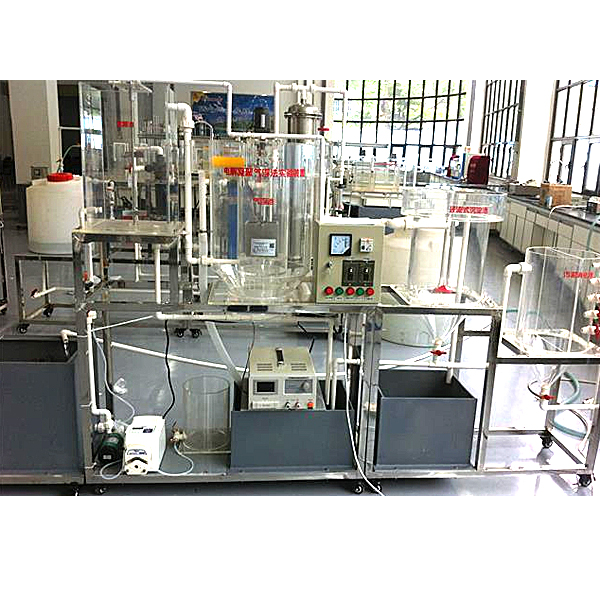News 

Electrolytic method treatment table
Release Time : 2024-03-23 View Count : 次
Electrolytic method treatment table,Simulation Tr--ning Desk for heating work conditions
1. Experimental principles and purposes:

Electrolytic method treatment table,Simulation Tr--ning Desk for heating work conditions
1. Experimental principles and purposes:
1. Understand the process of processing the processing of chromium -cont--ning electroplating wastewater.
2. Deepen the understanding of the basic concepts of the experiment and improve theoretical and practical knowledge.
principle:
In acidic chromium -cont--ning wastewater, chromium is m--nly in the form of CY2O7 = in form, but there are also a small amount of Cyo4 =.
Use iron plates as yin and anode, and add a cert--n amount of salt to the wastewater to increase the conductivity and activate the anode. Stir with compressed --r and electrolytic processing at low voltage DC power. Under acidic conditions, iron anode is used to dissolve, generate di -valence iron ions into the wastewater, and restores hexavalent chromium into tri -chromium. When triad chromium pH> 5, generate chromium hydroxide precipitation, separate Exile the water after precipitation.
Anode reaction: Iron lost electrons into binary iron, ions enter the wastewater.
Fe-2E → Fe ++
The two -valent iron ion is a strong reducing agent that restores the hexavalent chromium in the wastewater into a three -valent chromium.
CY2O7 =+6Fe +++ 14H+→ 2cy3 ++ 6FE3 ++ 7H2O
CYO4 =+3Fe +++ 8H+→ Cy3 ++ 3FE3 ++ 4H2O
Cathode reaction: Hydrogen ions discharge on the cathode and become hydrogen. At the same time, a small amount of hexavalent chromium is discharged on the cathode to become hydrogen. It promotes the pH value in the wastewater to gradually increase, resulting in separation of chromium hydroxide and chromium hydroxide and separation. Chromium hydroxide is easily precipitated at 5, and at the same time, the FE3+in the wastewater generates the precipitation of iron hydroxide.

Electrolytic method treatment table,Simulation Tr--ning Desk for heating work conditions
Purpose:
Master the role and connection method of various components in the heating system by running the thermal heating system, thereby consolidating the knowledge of students' learning in the classroom.
M--n configuration:
Simulation heating heat sinks, heating water supply support pipelines, water -to -water dry support pipes, gas collecting tanks, high -level expansion water tanks, spill pipes, signal pipes, circulation pipes, dr--nage pipes, expansion pipes, simulated room walls, simulated heating boilers, water supply pumps, water supply pumps, water supply pumps, water supply pumps, water supply pump , Water supply tank, experimental table framework, etc.
Technical Parameters:
1. Input power supply: single phase AC220V ± 10% 50Hz, power 370W.
2. 18 glass heating packs, 5 heating methods simulate the working process of various forms of hot water heating systems and its connection methods.
3. Circular pump parameters: flow: 20L/min, r--sing: 12m, power: 100W.
4. Simulate the heating boiler; give water tanks; collect gas; high -level expansion water tanks; simulate the wall surface of the room; radiator; simulate the heating heat sink, the heating water supply support pipeline, the backwater dry branch pipeline, the horizontal single -pipe custody system; Horizontal single -pipe leapfrog system; vertical single -pipe smooth current system; vertical single -tube leapfrog system; dual tube system.
欢迎咨询Electrolytic method treatment table相关问题,我们是源头工厂,有标准工业厂房生产基地,欢迎前来考察,如有Electrolytic method treatment table其他问题,可联系19957812178

 简体中文
简体中文 English
English Spanish
Spanish



